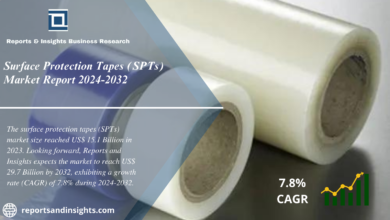How to Locate Ships and Maritime Vessels
The vastness of the ocean holds many secrets, but in today’s digital age, one thing we no longer have to guess about is the location of ships and maritime vessels. Whether you’re a maritime professional, a technology enthusiast, or an oceanographer, understanding how to track these vessels is crucial.
This comprehensive guide will walk you through the various methods and technologies used to locate ships and maritime vessels, ensuring you stay informed and ahead of the curve.
Why Locate Ships and Maritime Vessels?
Before we dive into the how, it’s essential to understand the why. Locating ships and maritime vessels isn’t just a modern marvel; it serves several critical functions:
- Safety and Security: Ensuring the safe navigation of ships and mitigating potential threats.
- Efficient Operations: Optimizing shipping routes and schedules to enhance commercial efficiency.
- Environmental Monitoring: Tracking vessel movements to study and mitigate environmental impacts.
- Regulatory Compliance: Ensuring vessels adhere to international maritime regulations.
Key Technologies for Locating Ships
1. Automatic Identification System (AIS)
AIS is one of the primary technologies used to track maritime vessels. It involves ships transmitting their location, speed, and other relevant data via VHF radio signals. Here’s how it works:
- Transponders on Ships: Each ship is equipped with an AIS transponder that broadcasts its position and other data.
- Satellite and Terrestrial Receivers: These receivers pick up the AIS signals and relay the data back to central databases.
- Data Aggregation: The collected data is then processed and made available to various stakeholders through platforms like MarineTraffic and VesselFinder.
Read More: Marine Hydraulic Pumps Market Size, Share | Industry Analysis 2024-2032
2. Global Positioning System (GPS)
GPS is a satellite-based system that provides real-time location data. While GPS is widely known for its use in terrestrial navigation, it also plays a vital role in maritime tracking:
- Satellite Constellations: A network of satellites orbiting the Earth transmit signals to GPS receivers on ships.
- Real-time Positioning: The receivers calculate the ship’s exact location by triangulating signals from multiple satellites.
- Integration with Other Systems: GPS data is often integrated with AIS for enhanced accuracy and reliability.
3. Long Range Identification and Tracking (LRIT)
LRIT is a global tracking system mandated by the International Maritime Organization (IMO) for certain ships. Here’s what you need to know:
- Satellite Communication: LRIT uses satellites to track vessels over long distances, beyond the range of terrestrial AIS.
- Mandatory Reporting: Ships must report their position at regular intervals to designated data centers.
- Enhanced Monitoring: LRIT provides governments and maritime authorities with the ability to monitor and control vessel movements.
4. Radar and Sonar Systems
Radar and sonar technologies, while not as commonly used for real-time tracking as AIS or GPS, play a significant role in maritime navigation and safety:
- Radar: Uses radio waves to detect objects and measure their distance and speed. It’s crucial for collision avoidance and navigation, especially in poor visibility conditions.
- Sonar: Utilizes sound waves to identify underwater objects and topography. It’s instrumental in submarine tracking and seabed mapping.
Platforms and Tools for Ship Tracking
Several platforms and tools have emerged to leverage these technologies and provide comprehensive ship tracking services:
1. MarineTraffic
MarineTraffic is one of the most popular platforms for tracking ships in real-time. It aggregates AIS data from numerous sources, providing:
- Live Ship Maps: Interactive maps showing real-time positions of vessels worldwide.
- Detailed Ship Information: Access to vessel details, including type, size, and voyage history.
- Custom Alerts: Notifications for specific ship movements or events.
2. VesselFinder
VesselFinder offers similar services to MarineTraffic, with additional features such as:
- Port Calls and Arrivals: Information on ship arrivals and departures at various ports.
- Fleet Management: Tools for managing and monitoring fleets of vessels.
- Historical Data: Access to past voyage data for analysis and research.
3. Ship Finder
Ship Finder is a user-friendly platform that offers mobile apps for on-the-go tracking. Key features include:
- Real-time Ship Tracking: Live maps displaying current ship locations.
- Augmented Reality: AR mode that lets users point their device at a ship to see detailed information.
- Search and Filters: Advanced search options to find specific vessels or types of ships.
Challenges in Ship Tracking
While the technologies and platforms mentioned above have revolutionized ship tracking, several challenges remain:
- Signal Interference: Weather conditions, natural obstacles, and other factors can interfere with signal transmission and reception.
- Data Accuracy: Ensuring the accuracy and reliability of the transmitted data can be challenging, especially in remote areas.
- Security Concerns: The broadcasting of ship positions can pose security risks, making it essential to balance transparency with confidentiality.
The Future of Ship Tracking
The future of ship tracking is poised for exciting advancements. Emerging technologies and innovations promise to enhance the accuracy, reliability, and scope of maritime tracking:
1. Artificial Intelligence (AI) and Machine Learning
AI and machine learning algorithms can analyze vast amounts of tracking data, identifying patterns and predicting vessel movements. These technologies can:
- Optimize Routes: AI-driven optimization can reduce fuel consumption and travel time.
- Predictive Maintenance: Early detection of potential issues can help prevent breakdowns and accidents.
- Enhanced Security: AI can identify suspicious activities and potential security threats.
2. Blockchain Technology
Blockchain offers secure and transparent data sharing, which can revolutionize maritime logistics and tracking:
- Immutable Records: Blockchain ensures that tracking data cannot be altered, providing a reliable audit trail.
- Decentralized Data: A decentralized system reduces the risk of data breaches and enhances data integrity.
Read More: Leveraging AI and Machine Learning in App Development: The Future on the Radar
3. Internet of Things (IoT)
IoT devices and sensors can provide real-time data on various aspects of a vessel’s condition and environment:
- Environmental Monitoring: Sensors can track weather conditions, water quality, and other environmental factors.
- Operational Efficiency: IoT devices can monitor fuel consumption, engine performance, and other operational metrics.
Conclusion
Tracking ships and maritime vessels is a complex but essential task for various stakeholders, from maritime professionals to technology enthusiasts and oceanographers. By leveraging advanced technologies like AIS, GPS, LRIT, radar, and sonar, along with innovative platforms like MarineTraffic and VesselFinder, we can achieve accurate and reliable vessel tracking.
The future holds even more promise, with AI, blockchain, and IoT set to revolutionize the field. As we continue to innovate and overcome challenges, the ability to track and manage maritime vessels will become even more seamless and integral to global operations.
Ready to explore the world of maritime tracking further? Sign up for our newsletter to stay updated on the latest advancements and insights in the industry.


